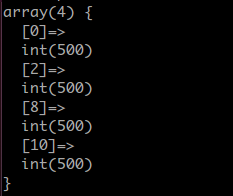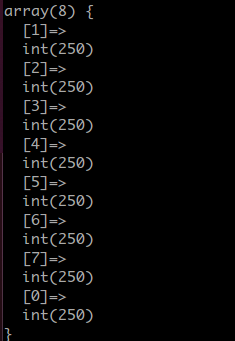OverView
Hash table based implementation of the Map interface. This implementation provides all of the optional map operations, and permits null values and the null key. (The HashMap class is roughly equivalent to Hashtable, except that it is unsynchronized and permits nulls.) This class makes no guarantees as to the order of the map; in particular, it does not guarantee that the order will remain constant over time.
This implementation provides constant-time performance for the basic operations (get and put), assuming the hash function disperses the elements properly among the buckets. Iteration over collection views requires time proportional to the "capacity" of the HashMap instance (the number of buckets) plus its size (the number of key-value mappings). Thus, it's very important not to set the initial capacity too high (or the load factor too low) if iteration performance is important.
An instance of HashMap has two parameters that affect its performance: initial capacity and load factor. The capacity is the number of buckets in the hash table, and the initial capacity is simply the capacity at the time the hash table is created. The load factor is a measure of how full the hash table is allowed to get before its capacity is automatically increased. When the number of entries in the hash table exceeds the product of the load factor and the current capacity, the hash table is rehashed (that is, internal data structures are rebuilt) so that the hash table has approximately twice the number of buckets.
As a general rule, the default load factor (.75) offers a good tradeoff between time and space costs. Higher values decrease the space overhead but increase the lookup cost (reflected in most of the operations of the HashMap class, including get and put). The expected number of entries in the map and its load factor should be taken into account when setting its initial capacity, so as to minimize the number of rehash operations. If the initial capacity is greater than the maximum number of entries divided by the load factor, no rehash operations will ever occur.
If many mappings are to be stored in a HashMap instance, creating it with a sufficiently large capacity will allow the mappings to be stored more efficiently than letting it perform automatic rehashing as needed to grow the table.
Note that this implementation is not synchronized. If multiple threads access a hash map concurrently, and at least one of the threads modifies the map structurally, it must be synchronized externally. (A structural modification is any operation that adds or deletes one or more mappings; merely changing the value associated with a key that an instance already contains is not a structural modification.) This is typically accomplished by synchronizing on some object that naturally encapsulates the map. If no such object exists, the map should be "wrapped" using the Collections.synchronizedMap method. This is best done at creation time, to prevent accidental unsynchronized access to the map: Map m = Collections.synchronizedMap(new HashMap(...));The iterators returned by all of this class's "collection view methods" are fail-fast: if the map is structurally modified at any time after the iterator is created, in any way except through the iterator's own remove method, the iterator will throw a ConcurrentModificationException. Thus, in the face of concurrent modification, the iterator fails quickly and cleanly, rather than risking arbitrary, non-deterministic behavior at an undetermined time in the future.
Note that the fail-fast behavior of an iterator cannot be guaranteed as it is, generally speaking, impossible to make any hard guarantees in the presence of unsynchronized concurrent modification. Fail-fast iterators throw ConcurrentModificationException on a best-effort basis. Therefore, it would be wrong to write a program that depended on this exception for its correctness: the fail-fast behavior of iterators should be used only to detect bugs.
This class is a member of the Java Collections Framework.
Feild
DEFAULT_INITIAL_CAPACITY 初始容量
The default initial capacity - MUST be a power of two.
不论传入的initial capacity是多少,都会转化比他小且离他最近的2的幂
至于为什么是2的幂,呵呵呵呵,往下看
| default=16
1 int capacity = 1; 2 while (capacity < initialCapacity) 3 capacity <<= 1;
DEFAULT_INITIAL_CAPACITY 初始容量
元素个数永远不会超过这个上限,不论如何设置和扩展。
| MAXIMUM = 1<<30 = 2^29
if (initialCapacity > MAXIMUM_CAPACITY) initialCapacity = MAXIMUM_CAPACITY;
DEFAULT_LOAD_FACTOR 复制因子
当容量达到当前最大容量的多少时需要启动复制
| default = 0.75
threshold = (int)(DEFAULT_INITIAL_CAPACITY * DEFAULT_LOAD_FACTOR);
threshold 复制门槛
当前容量超过(put时检查)threshold时,复制底层数据结果以扩展
if (size++ >= threshold) resize(2 * table.length);
modCount 修改计数
This field is used to make iterators on Collection-views of
the HashMap fail-fast
Hash
良好的hash保证,所有元素恰好落入数组的中(尽可能减少重复,以便减少指针移动次数)
当出现重复时,以链表的形式保存(新元素插入链表第一个!important)
| HashCode = Object.hashCode()
Magic
| 优化hash与更高效的散列算法
基于位的散列算法
//该方法返回此hash值应该储存在数组的下标 /** * Returns index for hash code h. */ static int indexFor(int h, int length) { return h & (length-1); }
| PHP实现的测试代码
<?php $arr = array(); $length = 10; //array length - 1 $data_length = 2001; //hashcode from 1 to 2002 for($i = 1; $i< $data_length; $i++) { if( !isset($arr[$i & $length]) ) { $arr[$i & $length] = 1; } else { $arr[$i & $length]++; } } var_dump($arr);
case 1
| $length = 10
| $data_length = 2001
运行结果:
很巧的是,有的下标上居然没有落值,而有值得下标的值非常均匀

case 2
| $length = 7 = 2^3 - 1
| $data_length = 2001
实验一下数组长度为2的幂
运行结果:
恰好均匀的落在了每一个上面

注意1<<n - 1 的所有位都是1,这样恰好可以保证从任意数恰好均匀落在所有位置上,原理等同于取余,但是限制是底数必须为2的幂,但是全是位操作 ![]()
优化Hash或抵制低效Hash
/** * Applies a supplemental hash function to a given hashCode, which * defends against poor quality hash functions. This is critical * because HashMap uses power-of-two length hash tables, that * otherwise encounter collisions for hashCodes that do not differ * in lower bits. Note: Null keys always map to hash 0, thus index 0. */ static int hash(int h) { // This function ensures that hashCodes that differ only by // constant multiples at each bit position have a bounded // number of collisions (approximately 8 at default load factor). h ^= (h >>> 20) ^ (h >>> 12); return h ^ (h >>> 7) ^ (h >>> 4); }
由于ForIndex方法的存在,为了避免出现低位相同的情况(低位相同会导致虽然高位不同的hashcode落在同样的下标上)
例如:原始数组3个(代表3个hash值),分别为 31,63,95,另外初始容量为16 = 2 ^ 4 = 10000
31=00000000000000000000000000011111
63=00000000000000000000000000111111
95=00000000000000000000000001011111
直接使用indexFor()结果如下
31=00000000000000000000000000011111 & 1111 = 1111 & 1111 = 15
63=00000000000000000000000000111111 & 1111 = 1111 & 1111 = 15
95=00000000000000000000000001011111 & 1111 = 1111 & 1111 = 15
//这说明质量低下的hash的低位总是相同,不适应indexFor
使用hash(),结果如下
31=00000000000000000000000000011111 => 00000000000000000000000000011110
63=00000000000000000000000000111111 => 00000000000000000000000000111100
95=00000000000000000000000001011111 => 00000000000000000000000001011010
//这样一来低位就不同了
00000000000000000000000000011110 & 1111 = 1110 & 1111 = 14
00000000000000000000000000111100 & 1111 = 1100 & 1111 = 12
00000000000000000000000001011010 & 1111 = 1010 & 1111 = 10
散列操作的主要目的是使在低位的散列码的差异明显,使得散列映射元件能够均匀地分布
Put & Get
public V put(K key, V value) { if (key == null) return putForNullKey(value); int hash = hash(key.hashCode()); int i = indexFor(hash, table.length); for (Entry<K,V> e = table[i]; e != null; e = e.next) { Object k; if (e.hash == hash && ((k = e.key) == key || key.equals(k))) { V oldValue = e.value; e.value = value; e.recordAccess(this); return oldValue; } } modCount++; addEntry(hash, key, value, i); return null; } public V get(Object key) { if (key == null) return getForNullKey(); int hash = hash(key.hashCode()); for (Entry<K,V> e = table[indexFor(hash, table.length)]; e != null; e = e.next) { Object k; if (e.hash == hash && ((k = e.key) == key || key.equals(k))) return e.value; } return null; }
e.hash == hash && ((k = e.key) == key || key.equals(k)
Hooks
init
初始化的时候的hook
/** * Initialization hook for subclasses. This method is called * in all constructors and pseudo-constructors (clone, readObject) * after HashMap has been initialized but before any entries have * been inserted. (In the absence of this method, readObject would * require explicit knowledge of subclasses.) */ void init() { }
remove & access
//Class.Entry /** * This method is invoked whenever the value in an entry is * overwritten by an invocation of put(k,v) for a key k that's already * in the HashMap. */ void recordAccess(HashMap<K,V> m) { } /** * This method is invoked whenever the entry is * removed from the table. */ void recordRemoval(HashMap<K,V> m) { }